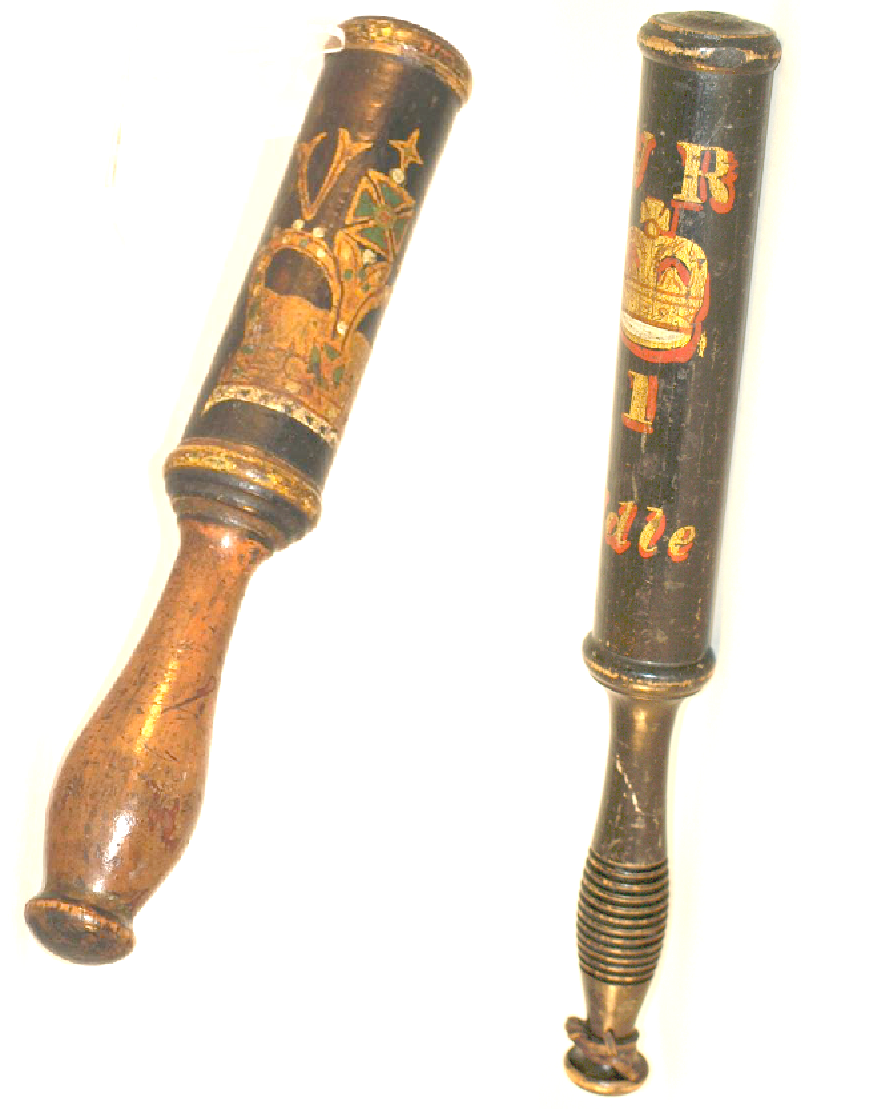Your cart is currently empty!
The Police Truncheon
Published by
on
The name was first used in conjunction with police officers in the 1800s, but they have a long, interesting history. Their descendants are still carried by some Pensacola Police Officers today.
What is a truncheon? It has long been a vital piece of equipment for police officers, and at one time actually exhibited their authority. Even though the name truncheon is not used much today, it is known by several other names: baton, billyclub, nightstick, PR24, ASP and many others. A truncheon is described as a big, heavy stick used as a weapon and tool by police officers.
Batons have been carried by law enforcers for many years. As they are today, truncheons were used as a tool of compliance in ancient times. In some cases, they were the only tool available.
Truncheons of old carried an additional meaning other than simply utilitarian. In Great Britain in the late 1700s, a truncheon was a wooden club with a label of identification attached to it. For instance, an officer employed by the London Metropolitan Police Service would have carried a truncheon as a tool and weapon. The truncheon contained a royal cipher, a coat-of-arms or an ornamental tip which officially identified who the officer was. This was the one piece of equipment used by the officer that was their form of ID. For instance, if an officer carried a truncheon with a silver crown, on the tip, and inscription on the side, or a plate attached, it was to signify that he had the authority to make an arrest in that area. Prior to the use of badges and uniforms, a truncheon was the only form of identification used by a constable or officer.
Similarly, a tipstaff was a smaller wooden piece that also displayed the holder’s credentials, but it was used more for officials and dignitaries (kings, governors, mayors, or representatives.) Another name used for club-style weapons (and later ornaments) is quarterstaff, although quarterstaffs were usually longer (5 ft) and stronger.
Truncheons were not homemade, but manufactured and sold to agencies. The largest manufacturer of truncheons was Parker Field and Sons. The company stamped their label into the butt-end of the truncheon as a sign of quality.
In the United States, Royalty wasn’t as prevalent, so truncheons were not as ornate, but they still were used by constables and officers, most of whom did not carry firearms. On February 17, 1884, an article in The Pensacolian (a local paper), reported that officers were wearing their first uniforms. Before they had uniforms, the truncheons served to identify who they were. Even after the officers dressed in their uniforms, they still felt that the truncheons were the most important tools they had, even though some of them carried pistols (purchased at their own expense.)
Slowly, the badge became the symbol of authority, leaving the truncheon as more of the tool and less of the ID staff. Names like “billyclub,” “night sticks,” “baton,” and “mace” were used more often. It became an entertaining and comfortable sight to watch a veteran policeman walking a beat and twirling his club (by the way, there was an art to that!) Even though they contained no official labels, officers knew their truncheons apart from another’s. Besides the day-to-day knocks and nicks, some officers carved their names, initials, or mark into the wood. A truncheon, or nightstick, was an extension of the officer himself!
In 1972, the late Lon Anderson introduced a baton that had a convenient side handle, increasing the effectiveness of it. Officers across the country were trained in the use of the PR24. For the next 20 years PR24s could be seen on the belts of many Pensacola Police officers. Another type of baton that was introduced in the 1970s was the ASP collapsible baton. The advantage to this tool it that it could be carried on an officer’s belt and was compact enough to not get in the way.
Today, a baton is a utilitarian piece of equipment that is used only when necessary. Further, when used, it usually ends up in an investigation. Some officers still carry them, but most don’t. Tasers and pepper spray have taken their place as tools of incapacitation and compliance. Batons are still an effective tool, but the culture of the twenty-first century attaches a stigma with the use of a club.
For many years, a club has been used as a defensive and offensive weapon, a tool, and a symbol for police officers – an interesting bit of history.
#pensacolasfinestpolice #pensacolapolice #oldpolicestories



2 responses to “The Police Truncheon”
-
I still have 1 like the last 1 on bottom shown above
-
I had one that belonged to my father, but I guess I lost it years ago. I wish I still had it.
-

Leave a Reply to Mike SimmonsCancel reply